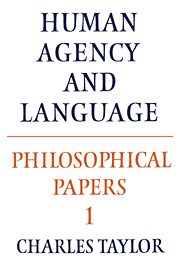7 - How is mechanism conceivable?
Published online by Cambridge University Press: 05 June 2012
Summary
Must a neurophysiological account of human behaviour be a mechanist one? This is the question I would like to address myself to in this paper.
The common sense of our age, informed to some degree by the scientific tradition, seems to fall naturally into a Kantian antinomy on this question (as Marjorie Grene has pointed out), that is, both the thesis and the antithesis seem to be grounded in solid argument. On one hand, it appears natural to proceed on the assumption that there is no upper limit to our ability to account for the functioning of ourselves and other animate organisms in terms of body chemistry and neurophysiology, and it is equally natural to assume that such accounts will be mechanistic – particularly in view of the sterility of rival approaches, such as vitalism. It even seems plausible to argue that ‘mechanistic explanation’ is a pleonasm, for any other kind of account appears rather to sidestep the problems of explanation; it does not, in other words, increase our ability to predict and control the phenomena as explanations should.
On the other hand, common sense is alarmed by the prospect of a complete mechanistic account of behaviour; not just alarmed practically, because of the unscrupulous use to which this knowledge might be put, but alarmed metaphysically, if I may use this term, because of what such an explanation would show about us.
- Type
- Chapter
- Information
- Philosophical Papers , pp. 164 - 186Publisher: Cambridge University PressPrint publication year: 1985
- 1
- Cited by



